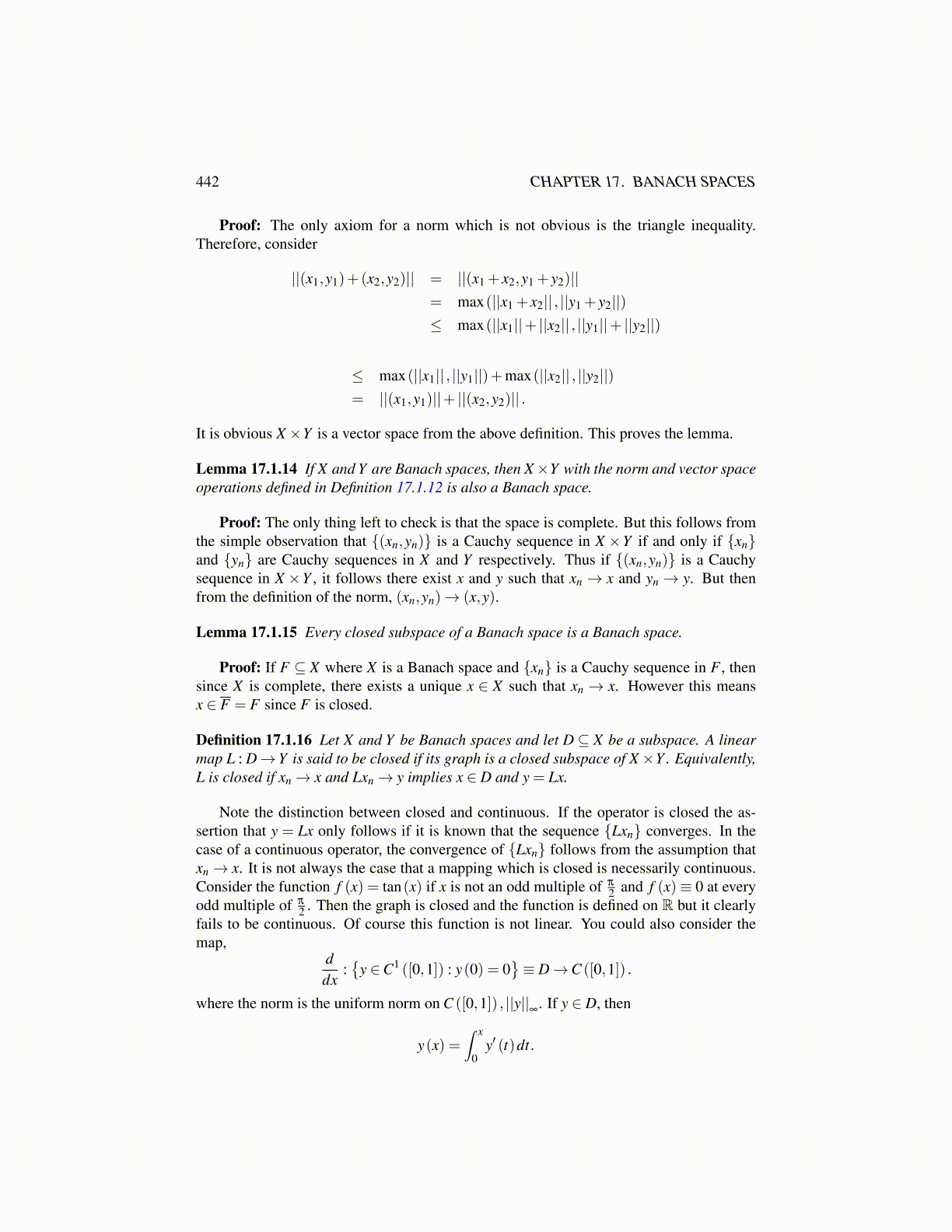
442 CHAPTER 17. BANACH SPACES
Proof: The only axiom for a norm which is not obvious is the triangle inequality.Therefore, consider
||(x1,y1)+(x2,y2)|| = ||(x1 + x2,y1 + y2)||= max(||x1 + x2|| , ||y1 + y2||)≤ max(||x1||+ ||x2|| , ||y1||+ ||y2||)
≤ max(||x1|| , ||y1||)+max(||x2|| , ||y2||)= ||(x1,y1)||+ ||(x2,y2)|| .
It is obvious X×Y is a vector space from the above definition. This proves the lemma.
Lemma 17.1.14 If X and Y are Banach spaces, then X×Y with the norm and vector spaceoperations defined in Definition 17.1.12 is also a Banach space.
Proof: The only thing left to check is that the space is complete. But this follows fromthe simple observation that {(xn,yn)} is a Cauchy sequence in X ×Y if and only if {xn}and {yn} are Cauchy sequences in X and Y respectively. Thus if {(xn,yn)} is a Cauchysequence in X ×Y , it follows there exist x and y such that xn → x and yn → y. But thenfrom the definition of the norm, (xn,yn)→ (x,y).
Lemma 17.1.15 Every closed subspace of a Banach space is a Banach space.
Proof: If F ⊆ X where X is a Banach space and {xn} is a Cauchy sequence in F , thensince X is complete, there exists a unique x ∈ X such that xn → x. However this meansx ∈ F = F since F is closed.
Definition 17.1.16 Let X and Y be Banach spaces and let D ⊆ X be a subspace. A linearmap L : D→Y is said to be closed if its graph is a closed subspace of X×Y . Equivalently,L is closed if xn→ x and Lxn→ y implies x ∈ D and y = Lx.
Note the distinction between closed and continuous. If the operator is closed the as-sertion that y = Lx only follows if it is known that the sequence {Lxn} converges. In thecase of a continuous operator, the convergence of {Lxn} follows from the assumption thatxn→ x. It is not always the case that a mapping which is closed is necessarily continuous.Consider the function f (x) = tan(x) if x is not an odd multiple of π
2 and f (x)≡ 0 at everyodd multiple of π
2 . Then the graph is closed and the function is defined on R but it clearlyfails to be continuous. Of course this function is not linear. You could also consider themap,
ddx
:{
y ∈C1 ([0,1]) : y(0) = 0}≡ D→C ([0,1]) .
where the norm is the uniform norm on C ([0,1]) , ||y||∞
. If y ∈ D, then
y(x) =∫ x
0y′ (t)dt.